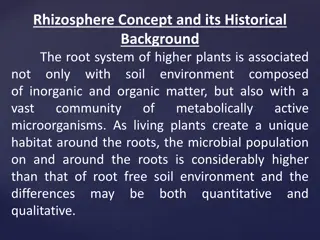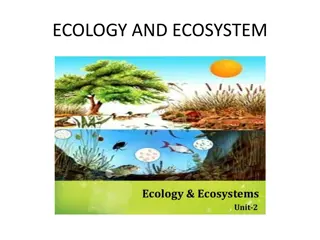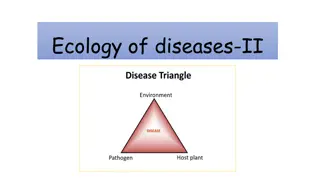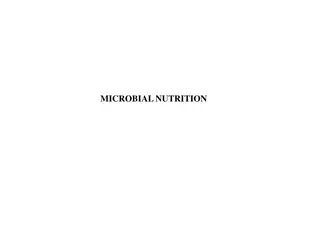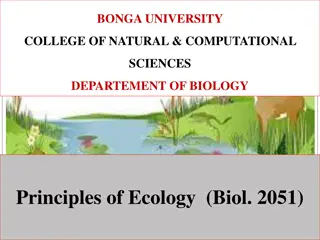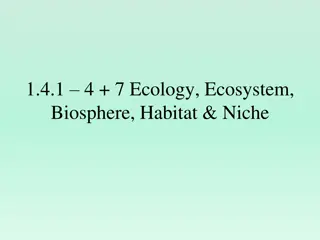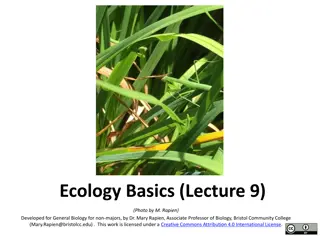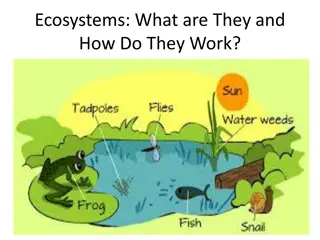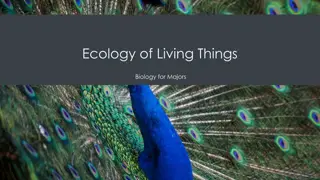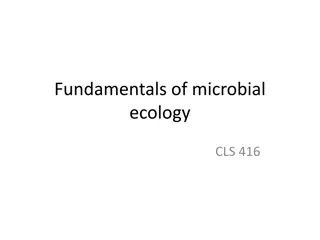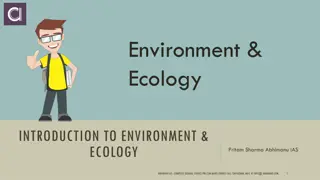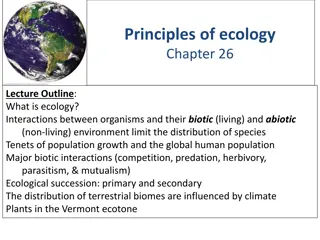Understanding Microbial Ecology: Interactions and Associations in Ecosystems
Interactions of organisms in ecosystems play a crucial role in the functioning of microbial ecology. Dr. Abhishek Thakur explores symbiosis, mutualism, syntrophism, commensalism, predation, and parasitism, shedding light on how different organisms interact with each other and their physical environment. These relationships define the balance and dynamics within microbial communities.
Download Presentation

Please find below an Image/Link to download the presentation.
The content on the website is provided AS IS for your information and personal use only. It may not be sold, licensed, or shared on other websites without obtaining consent from the author. Download presentation by click this link. If you encounter any issues during the download, it is possible that the publisher has removed the file from their server.
E N D
Presentation Transcript
Microbial ecology Microbial ecology Dr. Abhishek Thakur (Assistant Professor) College of Fisheries, Kishjanganj BASU, Patna
Interactions of organisms with each other and with their physical environment contribute to the functioning of ecosystems.
Symbiosis Symbiosis Symbiosis is an association: in a number of ways: 1. Ectosymbiosis-microorganism 2. Endosymbiosis-microorganism 3. Ecto/ endo symbiosis-microorganism
Mutualism Mutualism Obligatory association : reciprocal benefit to both partners. example: Lichens-an ,fungus ,alga, Fungal partner, obtains nutrients well as oxygen. Algal partner is protected from excess light
Syntrophism Syntrophism Syntrophism - mutually beneficial relationship each organism provides one or more growth factors, nutrients, or substrates for the other cross-feeding or the satellite phenomenon
Commensalism Commensalism The microorganism (commensal) benefits, while the host is neither harmed nor helped Escherichia coli lives in the colon Uses oxygen creating an anaerobic environment in which obligate anaerobes Bacteroides grow.
Predation Predation Predator organism engulfs or attacks a prey organism; Predatory bacteria are known Bdellovibrio, Vampirococcus, and Daptobacter
Parasitism Parasitism One organism (parasite) benefits from another (host)






